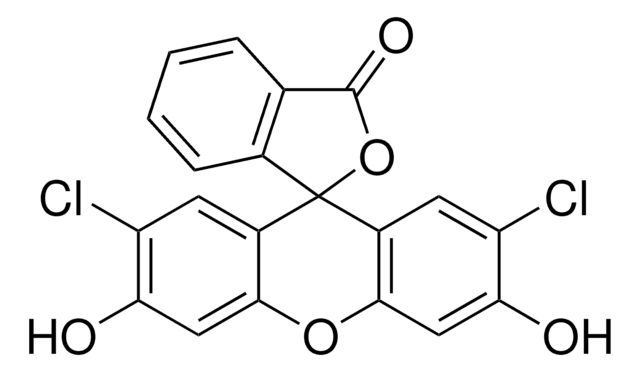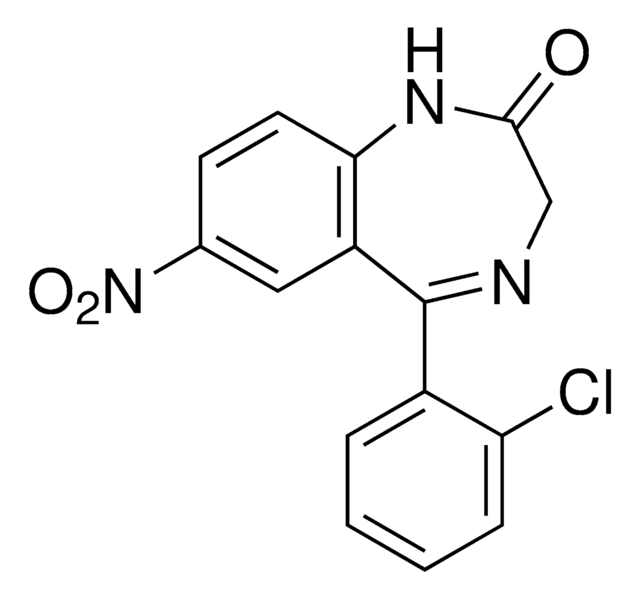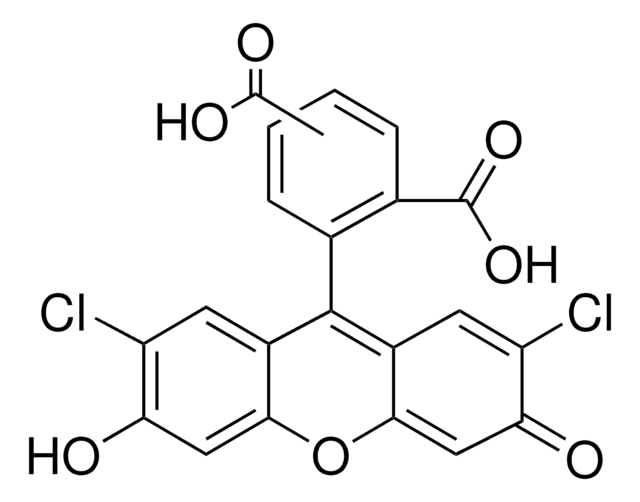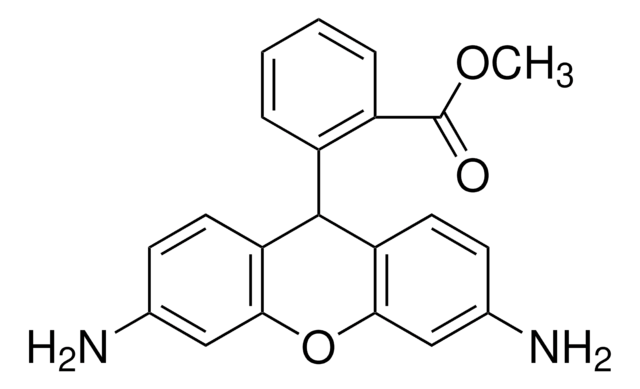Kluczowe dokumenty
D6883
Dioctan 2′,7′-dichlorodihydrofluoresceiny
≥97% (HPLC), powder, cell-permeable non-fluorescent probe
Synonim(y):
DCFH-DA
About This Item
Polecane produkty
Nazwa produktu
Dioctan 2′,7′-dichlorodihydrofluoresceiny, ≥97%
Poziom jakości
Próba
≥97%
Formularz
powder
temp. przechowywania
−20°C
ciąg SMILES
CC(=O)Oc1cc2Oc3cc(OC(C)=O)c(Cl)cc3C(c2cc1Cl)c4ccccc4C(O)=O
InChI
1S/C24H16Cl2O7/c1-11(27)31-21-9-19-15(7-17(21)25)23(13-5-3-4-6-14(13)24(29)30)16-8-18(26)22(32-12(2)28)10-20(16)33-19/h3-10,23H,1-2H3,(H,29,30)
Klucz InChI
PXEZTIWVRVSYOK-UHFFFAOYSA-N
Szukasz podobnych produktów? Odwiedź Przewodnik dotyczący porównywania produktów
Opis ogólny
Zastosowanie
- sensitive and rapid quantitation of oxygen-reactive species in response to oxidative metabolism
- microplate assay for detecting oxidative products in phagocytic cells
- quantitative multiwell myeloid differentiation assay
Przechowywanie i stabilność
Kod klasy składowania
11 - Combustible Solids
Klasa zagrożenia wodnego (WGK)
WGK 3
Środki ochrony indywidualnej
Eyeshields, Gloves, type N95 (US)
Wybierz jedną z najnowszych wersji:
Masz już ten produkt?
Dokumenty związane z niedawno zakupionymi produktami zostały zamieszczone w Bibliotece dokumentów.
Klienci oglądali również te produkty
Produkty
Oxidative stress is mediated, in part, by reactive oxygen species produced by multiple cellular processes and controlled by cellular antioxidant mechanisms such as enzymatic scavengers or antioxidant modulators. Free radicals, such as reactive oxygen species, cause cellular damage via cellular.
Nasz zespół naukowców ma doświadczenie we wszystkich obszarach badań, w tym w naukach przyrodniczych, materiałoznawstwie, syntezie chemicznej, chromatografii, analityce i wielu innych dziedzinach.
Skontaktuj się z zespołem ds. pomocy technicznej











